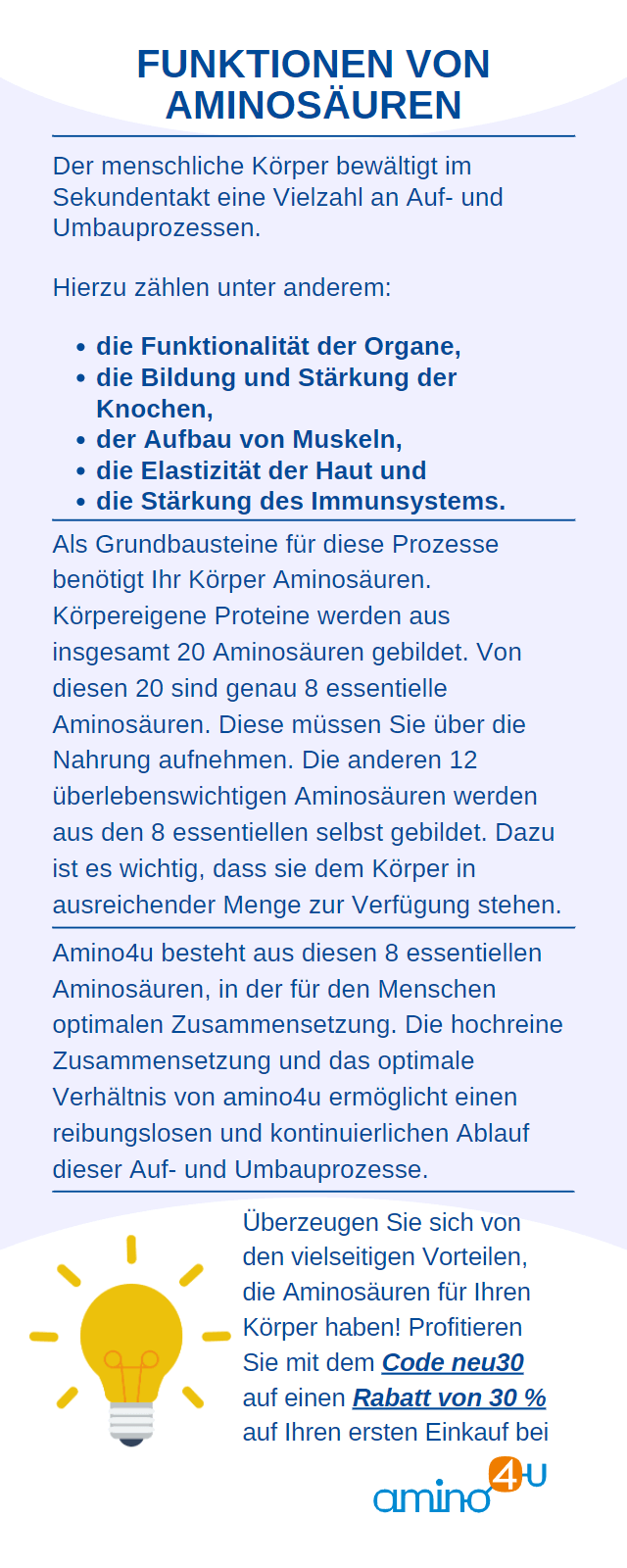Push-ups - also known as push-ups or press-ups - are among the most well-known fitness exercises. Even people who don't like sports and laypeople who have never dealt with the topics of muscle building and strength training can do something with this training method. After all, push-ups are one of the most original human movements.
And not only that. Push-up exercises are widespread in almost every sport. There is hardly a footballer, handball player, track and field athlete, tennis player or, for example, swimmer who has not yet completed a push-up as part of their fitness and training program .
This generally increases strength endurance and fitness in particular. But how effective do push-up exercises actually support muscle building? We investigated this question.

Which muscles are targeted?
The push-up generally acts as a sporty bodyweight exercise that strengthens the muscles.
The push-up trains the following muscles:
- the arm extensor (M. Triceps brachii)
- the shoulder muscles (M. Deltoideus pars clavicularis)
- the chest muscles (M. Pectoris Major)
- the abdominal muscles (M. rectus abdominis)
How to do a push-up correctly:
The prone position represents the starting position of the push-up ; the body is stretched down to the toes. Your hands should be slightly above your shoulders and shoulder-width apart with your arms bent.
The thumbs point inward while the other fingers point forward. Now tense your arms at the same time. This stretches them and pushes your upper body off the ground.
Your body weight is now evenly distributed between your hands and the tips of your toes. Your body forms a continuous line from your head to your knees or to your toes. Your abdominal muscles are also tense.
Then bend both of your arms at the same time again so that your upper body is lowered. This lowering process is only complete when the tip of your nose almost touches the ground. Your body remains stretched throughout the exercise.
These 5 tips optimize the effectiveness of push-ups
- In this case, the strength lies in calm and evenness. You should generally avoid jerky movements. In order to achieve a training effect, even movements when pushing up and down are required.
- The head must always be in line with the body . If you lift your head back, there is a risk of strains.
- Avoid a hollow back. You can achieve this by maintaining appropriate body tension . It is important that you do not stretch your buttocks upwards or press them downwards during the exercises.
- Always perform the exercises with the maximum possible range of motion. The deeper you bring your body to the ground during the lowering movement, the more intense the training effect.
- You should inhale as you lower yourself and exhale as you push up .
Push-ups do not necessarily have to be performed in a specific pattern. For example, there are two different concepts regarding arm extension. In one exercise concept, the shoulders are tensed to the limit and at the same time fully stretched.
The other training method allows the arms to always remain slightly bent, even in the highest position. This way you keep tension in your triceps, shoulders and chest.
You can also vary how you hold your hands. Most often, push-ups are performed on the palms of the hands. For example, you can also follow in the footsteps of Bruce Lee, who did push-ups on his fingertips or even just two fingers.
However, you need a lot of hand strength to do this. You can also use your tense fists for push-ups. You should primarily put weight on the knuckles of the middle and index fingers. If you do push-ups in this form, you also protect your wrists. Alternatively, you can also use push-up bars .
These variations are also push-ups
-
One-arm push-up
Anyone who has seen the movie Rocky also knows one-armed push-ups. But ambitious athletes also like to use one-arm push-ups as an intensive training method in real life. When performing it, it is important that you shift your balance depending on the arm you are using.
-
Single leg push up
Advanced and professional people also like to train the so-called one-legged push-up. The name says it all here. The heel of the active leg serves as a support platform for the passive leg. This means that with this variant your body weight is only a total of three points. This leads to increased body tension, which is further exacerbated by the fact that you have to keep your balance during an exercise of this type.
-
High push up
Placing your feet on a higher spot will put more weight on your arms. If you have a training partner, you can also rest your feet on their shoulders. This version is called the hunter push-up . To lower your body even further, you can also use your hands at an elevated position as a grip. You can also stretch your head. This has roughly the same effect. However, you can quickly get a strain if you do this.

3 more options for push-up muscle building
-
Wall push-ups
This is the easiest push-up variation. It is particularly recommended for beginners and the untrained. The execution is basically the same as with the classic push-ups on the floor. However, with this variation you stand about shoulder-width apart from a wall in an upright position. Support yourself on the wall with your arms. If you want to increase the difficulty, simply change the position of your feet. For example, if you stand on tiptoes, you create much greater tension and therefore effectiveness.
-
Knee push-ups
Beginners often find push-ups difficult, especially at the beginning. A simple trick helps to simplify training. This makes it much easier to do push-ups if you rest your body on your knees. You can keep your legs next to each other or cross them. The further execution then takes place in the typical form. In this case, athletes talk about knee push-ups. With this variant, you load your arm muscles with around 50 percent of your body weight. That's at least 20 percent less than conventional push-ups.
-
Wide push-up
Would you like to continue building your chest muscles? Then you should choose the wide push-up variant. When doing wide push-ups, place your hands slightly wider than shoulder-width. Due to this special posture, push-ups primarily stress the chest muscles.
Those who do push-up exercises usually not only want to improve their strength and fitness, but also gain muscle mass . However, normal training of classic push-ups alone is not enough.
Once you have reached the limit of 20 or 25 push-ups in a row, the training primarily only has an effect on your strength endurance. The increase in strength endurance can of course also be seen as a positive aspect.
If your goal is to build muscle quickly , you need to use your push-ups to provide a much stronger stimulus for growth. You can achieve this by creating greater tension in the muscle .
How do push-ups work to build muscle?
Place your hands further below your shoulders more towards your hips. This brings your arms closer to the center of gravity of your body. The following applies: the further below your shoulders you place your hands, the more of your own body weight you ultimately have to lift.
Always pay attention to your body tension. If you neglect this, the real stress and growth stimuli for the muscles in question will immediately decrease. What is particularly important in this context is the training intensity .
Basically, the term intensity or training intensity can be used to describe how intense the completed set or the entire training was. This does not mean a push-up to build muscle that just feels hard.
Because in this case it is just the so-called perceived intensity (intensity of effort). Rather, it's about the intensity of the load , i.e. the relative repetition maximum (intensity of load).

This is what you should know about training intensity
The training intensity has an inverse relationship with the repetition ranges performed.
This means that the following applies to you when training push-ups:
The fewer repetitions you can do in a set, the higher the intensity. With regard to your personal repetition maximum, the value 1RM ( one-repetition maximum ) is used.
In practice this means:
- At 100 percent of 1RM, you can always complete exactly one repetition.
- With 80 to 85 percent of 1RM, around five to eight repetitions are possible.
- You can usually do 60 percent of the 1RM for twelve to 15 repetitions.
There is a very simple reason why intensity or training intensity is crucial when building mass . Training intensity is responsible for muscle fiber recruitment.
At an intensity of around 80 percent of your 1RM with around five to eight repetitions, all available muscle fibers are activated from the first push-up . All fibers receive complete training stimuli from the first repetition onwards.
This is huge for building your muscles. In this case, you are already training activated fibers that are stimulated by the training stimuli during hypertrophy training .
The different repetition ranges correspond to the training goals and represent individual training goals. This means you can easily determine whether you want to specifically lose weight and build muscle , go for maximum strength or work on your strength endurance.
According to classic training science, you can use the following repetition ranges as a guide:
- To train your strength endurance, twelve to 25 repetitions are recommended.
- Six to twelve repetitions are the optimal value for training and building muscles.
- When training for maximum strength, you should not be able to do more than five repetitions at most. The training effect is strongest with one or two repetitions.

Push-ups vs. bench presses
The intensity of push-ups can be increased almost as desired without necessarily having to use weights.
It is possible to determine the difficulty of push-ups by maxing out the number of repetitions, by moving the hands or arms more towards the body's center of gravity and also by using various push-up variations.
For example, you can choose the training intensity so that you can train a maximum of eight to twelve repetitions in the medium repetition range. In this context, it is worth taking a look at the bench press.
At first glance, the bench press offers two particular advantages compared to training with push-ups. On the one hand, this discipline allows for very precise dosage of weight. On the other hand, with the help of a training partner, you can virtually force repetitions from high stress.
You also particularly address the adduction of the pectoral muscles. The effect achieved here is comparable to push-ups, where you place your hands at hip height.
In contrast, push-up exercises result in increased activation of the stabilizing muscles. If you gain muscle mass and muscle strength , this is accompanied by improved athleticism. In addition, increased training can optimize the anteversion function of your chest muscles; so it is highlighted.
Whether bench presses or push-ups - which type of training is ultimately more effective for building muscles cannot be answered clearly.
The fact is that the bench press is particularly suitable for athletes who do pure bodybuilding for women and men. Because you can train much faster and more specifically with higher weights. Additionally, the arm position during the bench press creates more tension in the chest.
In contrast , building muscle mass takes more time and patience with push-up training . With a corresponding training intensity, you promote both body tension and athleticism to a much greater extent.

